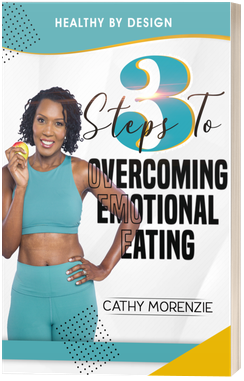Losing weight can be a difficult but worthwhile journey, but how can you tell if you’re headed in the right direction? Although the scale’s number can serve as a helpful gauge of your development, it is not a complete picture. You can more precisely and successfully evaluate your body composition, fitness level, and health with the use of alternative measurements. We’ll outline five crucial metrics for effective weight loss in this blog post, along with instructions on how to compute and apply them.
1. Basal Metabolic Rate (BMR)
Your basal metabolic rate (BMR), also known as your resting metabolic rate (RMR), represents the amount of calories your body requires to sustain essential physiological processes while at rest. Breathing, blood circulation, brain activity, and cell maintenance are among these functions. About 60–75% of your total daily energy expenditure (TDEE), which we’ll talk about next, is accounted for by your BMR.
Understanding your BMR helps you tailor your calorie intake to support weight loss without compromising your body’s essential functions. If you consume fewer calories than your BMR, your body may enter a starvation mode and slow down your metabolism, making it harder to lose weight. On the other hand, if you consume more calories than your BMR, you may gain weight unless you burn off the excess calories through physical activity.
To calculate your BMR, you can use the following formula, which is based on the Mifflin-St Jeor equation:
BMR = 10 x weight + 6.25 x height} – 5 x age + gender constant
The gender constant is +5 for males and -161 for females. The weight is in kilograms, the height is in centimeters, and the age is in years. For example, a 35-year-old female who weighs 65 kg and is 165 cm tall would have a BMR of:
BMR = 10 x 65 + 6.25 x 165 – 5 x 35 – 161 = 1,371 calories
Alternatively, you can use an online calculator to estimate your BMR, such as this one, click here: https://www.calculator.net/bmr-calculator.html
2. Total Daily Energy Expenditure (TDEE)
Your total daily energy expenditure (TDEE) is the amount of calories you burn in a day, including your BMR and your physical activity level. Your TDEE varies depending on how active you are, as well as other factors such as your genetics, hormones, and environmental conditions.
Knowing your TDEE allows you to create a calorie deficit for weight loss while ensuring you’re still meeting your body’s energy needs. A calorie deficit is the difference between the calories you consume and the calories you burn. To lose weight, you need to create a negative calorie balance, meaning you burn more calories than you consume. A general rule of thumb is to aim for a calorie deficit of 500 calories per day, which can result in losing about 0.5 kg (1 lb) per week.
To calculate your TDEE, you can use the following formula, which is based on the Harris-Benedict equation:
TDEE = BMR x activity factor
The activity factor is a multiplier that reflects how active you are on average. You can choose one of the following values based on your lifestyle:
- Sedentary: 1.2 (little or no exercise, desk job)
- Lightly active: 1.375 (light exercise or sports 1-3 days per week)
- Moderately active: 1.55 (moderate exercise or sports 3-5 days per week)
- Very active: 1.725 (hard exercise or sports 6-7 days per week)
- Extremely active: 1.9 (very hard exercise or sports and a physical job)
For example, using the same female from the previous example, if she is moderately active, her TDEE would be:
TDEE = 1,371 x 1.55 = 2,125 calories
Alternatively, you can use an online calculator to estimate your TDEE, such as this one, click here: https://tdeecalculator.net/
3. Waist-to-Hip Ratio (WHR)
Your waist-to-hip ratio (WHR) is a valuable indicator of your abdominal fat distribution and your overall health risk. Abdominal fat, also known as visceral fat, is the fat that surrounds your internal organs and can cause inflammation and metabolic disorders. A higher WHR may indicate increased risk of chronic diseases such as heart disease, diabetes, and some cancers.
To calculate your WHR, you need to measure your waist circumference and your hip circumference. Your waist circumference is the narrowest part of your torso, usually around your belly button. Your hip circumference is the widest part of your lower body, usually around your buttocks. You can use a tape measure to take these measurements, preferably in the morning before eating or drinking.
Once you have your measurements, you can use the following formula to calculate your WHR:
WHR = waist circumference
hip circumference
For example, if your waist circumference is 80 cm and your hip circumference is 100 cm, your WHR would be:
WHR = 80 = 0.8
100
Alternatively, you can use an online calculator to estimate your WHR, such as this one, click here: https://www.thecalculatorsite.com/health/whr-calculator.php
The ideal WHR for health and aesthetics varies depending on your gender and ethnicity. However, a general guideline is to aim for a WHR of less than 0.9 for men and less than 0.85 for women.
4. Body Mass Index (BMI)
Your body mass index (BMI) is a simple and widely used measure of your weight status. Instead of relying solely on a scale to measure your weight, your BMI looks at the relationship between your height and weight. BMI provides a general indication of whether you’re underweight, normal weight, overweight, or obese, helping to assess health risks associated with weight.
To calculate your BMI, you can use the following formula:
BMI = weight
height^2
The weight is in kilograms and the height is in meters. For example, if your weight is 65 kg and your height is 1.65 m, your BMI would be:
BMI = 65 = 23.9
1.65^2
Alternatively, you can use an online calculator to estimate your BMI, such as this one, click here: https://www.calculator.net/bmi-calculator.html
The standard BMI categories are as follows:
- Underweight: less than 18.5
- Normal weight: 18.5 to 24.9
- Overweight: 25 to 29.9
- Obese: 30 or more
However, BMI has some limitations and may not be accurate for everyone. For instance, BMI does not account for muscle mass, bone density, body frame, age, or gender. Therefore, people who are very muscular, pregnant, elderly, or have certain medical conditions may have a higher or lower BMI than expected. It is important to consult your doctor or a health professional before making any decisions based on your BMI.
5. Body Fat Percentage (BF%)
Your body fat percentage (BF%) is the proportion of your weight that is fat. Unlike BMI, BF% takes into account your body composition and distinguishes between fat mass and lean mass. Lean mass includes your muscles, bones, organs, and water. BF% is a more accurate and comprehensive measure of your health and fitness than BMI, as it reflects how much fat you have and where it is stored.
To measure your BF%, you can use various methods, such as skinfold calipers, bioelectrical impedance analysis (BIA), hydrostatic weighing, air displacement plethysmography (ADP), or dual-energy X-ray absorptiometry (DXA). However, these methods may vary in accuracy, availability, cost, and convenience. You can also use online calculators or formulas to estimate your BF%, but they may not be very reliable.


